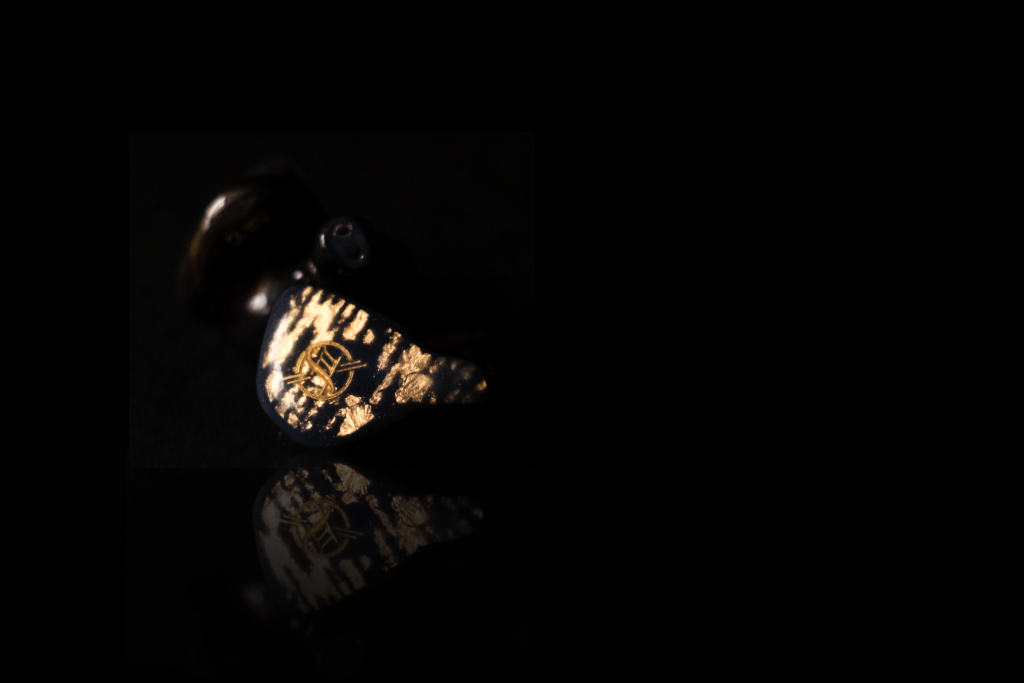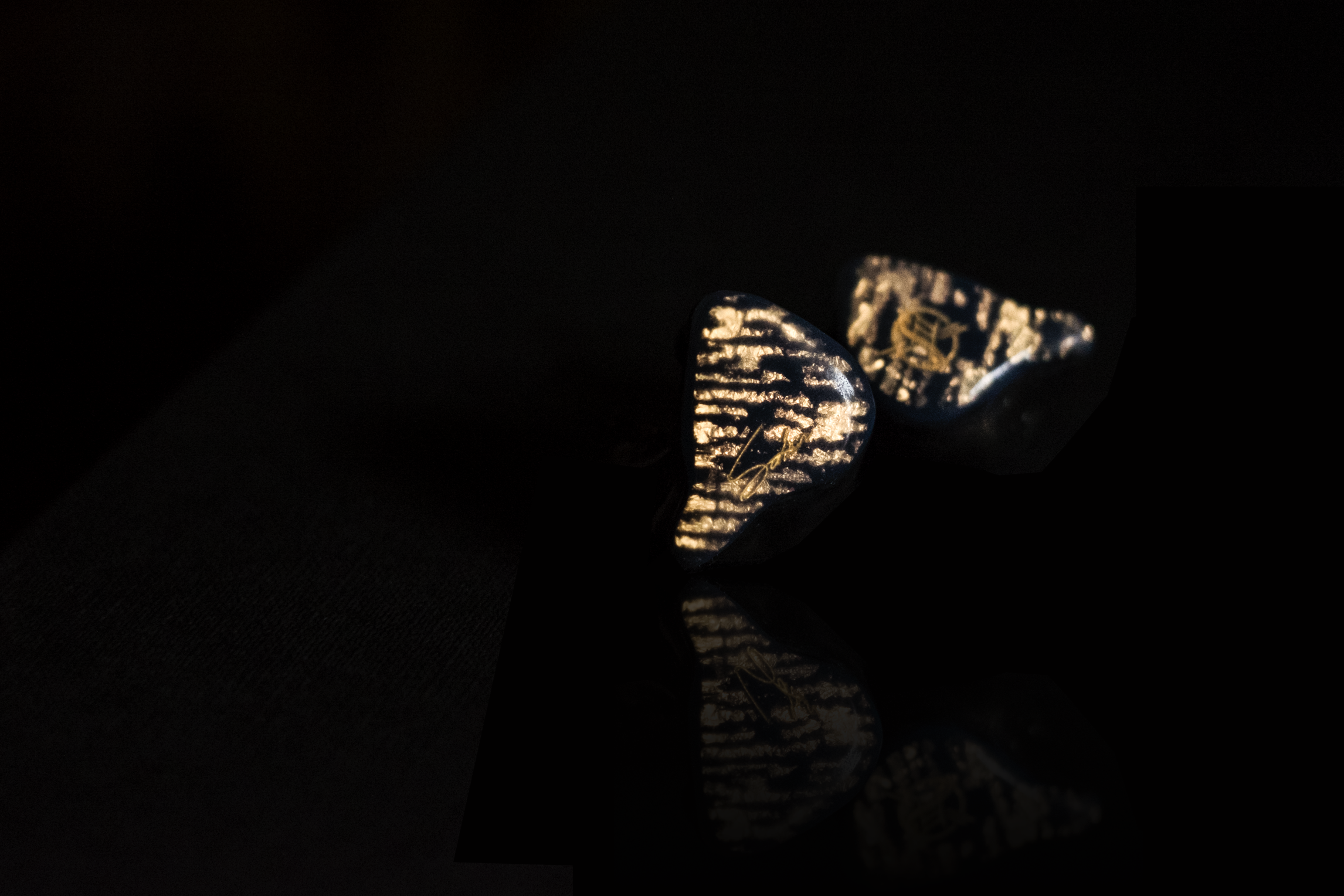Presentation
The FIBAE 2 is an IEM that’s primarily driven by dynamism and liveliness. Although it has its own specific flavour and atmosphere, how it portrays music isn’t necessarily dictated by melody, colour or tone; rather, it shines through rhythm, texture and energy. It’s akin to the contrast between a guitar solo and a drum solo. The former emotes through harmony and tonal colour, while the latter does so through pace, kinetics and flow. The FIBAE 2’s stage is more-or-less absolute, with dimensions, note sizes and temperatures that hardly ever shift from song-to-song. It’s a stage with great proportions – one of the widest, deepest and best-layered out of any 2-driver IEM I’ve heard – and one that’s bolstered by a charming richness. A musical warmth belies its instruments – endowing them with body, substantiality and weight – but, despite this, its impressively black background makes way for top-class separation as well. Instruments and vocals aren’t the most well-outlined or well-defined, but they are dead easy to locate with spatial stability and stereo imaging that’s simply unrivalled at this price point.

The FIBAE 2 carries the Custom Art house sound through-and-through. Embodied by a slightly darker tone, the FIBAE 2 attains its richness through an abundance of decay and an absence of peaks. By softening transients and allowing them to roll-off slowly over time, the FIBAE 2 acquires massive headroom, smooth dynamic performance, and tons of harmonic texture. When a cymbal is struck, most IEMs accentuate the CRASH! before dropping drastically in SPL as the cymbal sizzles out its overtones. On the other hand, with the FIBAE 2, what you’d hear is a punchy crash… followed by harmonics that linger at a similar level. What this adds to its presentation is a unique texture somewhere between smooth and coarse – almost like film grain – as well as a laid-backed-ness that associate the FIBAE 2 and its brethren with words like organic. However, where this falters is in transparency. Due to a lack of transient energy, instruments struggle to pop into the foreground of the soundscape, and the images they produce begin to blur as a result. But, its fantastic separation, stage organisation and pitch-black stage compensate for this to an admirable degree.
Bass
The FIBAE 2’s bass is the driving force behind its powerful presentation. It’s beautifully rounded, naturally accentuated, and achieves a balance of punch and tone that’s awe-inspiring at its price point. Although the FIBAE 2’s low-end is tilted towards the upper-bass, it is ultimately defined by its foundation: Luscious mid-bass warmth and vivacious sub-bass energy. Kick drums constantly sound vintage; showered in tonal richness that’s unquestionably analog, and wooly and enveloping upon impact. Bass guitars also benefit from gorgeous sub-bass texture, enriching them with grit, tension, and verve. With all that said though, due to its inclination towards impact and roundedness, the FIBAE 2’s bass isn’t the most revolved. Its saving grace, then, comes in the form of air. Because of its upper-bass emphasis and admirable extension, the FIBAE 2’s lower registers are beautifully lit; deftly juggling clarity and punch in near-equal proportions. It’s not a bass that looms over the rest of the soundscape shrouded in darkness; it’s one to be felt, heard and seen.
The key word here is electricity; the FIBAE 2’s bass is packed to the brim with spunk and sparkle, and it never fails to completely command a song’s pace, momentum and flow. But, despite its snappy nature, the FIBAE 2’s low-end is strict, disciplined and considerate from start to finish; often to an utterly impressive degree. At its price bracket – where big, brave and bold are the norm – Piotr dodges what sells, and instead caters to what engages: Linearity, balance and coherence. It neither bleeds nor blooms, perfectly recognising its place in the mix. It follows dynamic cues to a tee; growling thunderously when called upon, and simmering in patience otherwise. Even unto the midrange, the FIBAE 2’s low-end displays incredible restraint. While it does contribute slightly to note body and vocal weight, it spends most of its time sat back; letting its lower-midrange do most of the heavy-lifting. The FIBAE 2’s lower-registers embody the qualities that define a professional bass player: mature, mindful and controlled, yet exciting, engaging and downright infectious all at the same time.
Midrange
The FIBAE 2’s midrange is stunning at its price. Again, compared to the rest of the competition, the FIBAE 2 does not deserve a midrange this engaging, musical or multi-faceted. But, Piotr is no stranger to defying expectation, and he’s gone for gold here; delivering instruments that seduce with ease, and captivate with richness, depth and detail. The FIBAE 2’s vocal presentation is bolstered by a hefty lower midrange. While it isn’t the most substantial in thickness or weight, it ultimately prevents voices from becoming overshadowed by the bass and lower treble. And – despite a slight lack of forwardness – vocals are imbued with strong dynamic energy; displaying a persistent and powerful presence no matter how busy the entire ensemble becomes. Authority also impresses here. The FIBAE 2’s lower midrange sports great solidity and texture; male baritone vocals, grand pianos and cellos throb with aplomb and resonate without restraint, all whilst maintaining a deep, open and pitch-black background in the process. Bravo, Piotr. Bravo.

Although the mids are mostly linear, the FIBAE 2 does exhibit a modest hump just before its upper-midrange. While the more typical upper-mid peak would’ve given the FIBAE 2 greater articulation, it would’ve been at the cost of tonal balance. This bump, instead, serves as a compromise of both; benefitting both natural continuity and detail retrieval. Plus, what this pre-upper-mid hump provides is a shift in dynamics. In drums, instead of focusing transients on cymbal crashes, the FIBAE 2 directs them towards snare shots. This beautifully enhances the interplay between the kick and the snare with liveliness and fun, whilst also preventing the former from dominating the percussive ensemble. However, this bump does have side effects of its own. Although most female vocals sound just as natural and smooth as male vocals do, some may find this tuning unflattering. Vocalists like Renee Olstead and Nikki Yanofsky – who sing with a brighter timbre – can end up sounding throaty and hoarse. But, overall, this is a small price to pay for a key component in the FIBAE 2’s addictive signature; an engaging midrange that balances richness and clarity like a pro, and does so with impressive gravitas, tenacity and depth.
Treble
The FIBAE 2’s treble is what fuels its impressive detail retrieval. Admirable articulation, openness and texture all compose a top-end that brilliantly blends clarity and smoothness. Extension and linearity are its strongest suits; allowing transients to decay with excellent grace and further solidifying the richness that runs throughout its entire signature. The FIBAE 2’s treble is attenuated, but it is a tad bright in tone, adding sufficient liveliness and air. Although, despite its modesty, the FIBAE 2’s top-end isn’t the most forgiving. Hotly-mastered recordings may sound just sizzle-y enough up top, that they risk entering unnatural territory. That’s not to say the FIBAE 2 has a harsh treble, though; it’s tonal balance in this specific range is just so fragile, that immersion can quickly fall apart when its top-end is properly provoked. Nevertheless, with most competent recordings, the FIBAE 2 runs like a dream. Dynamic performance – as usual – astounds; complementing its low-end like bolts of lightning that precede a guttural thunderstorm. If the track allows, the FIBAE 2’s treble will remain behaved, but you can never take away its enthusiasm and energy; neither to its benefit nor its detriment.
Here’s where the FIBAE 2 showcases its most notable strength: Stereo separation and imaging. Although I touched on this in Presentation, it’s a feature worth revisiting because of how impactful it is to the listening experience. Thanks to the FIBAE 2’s impressive top-end extension, its resulting soundscape is about as good as a blank canvas. But, where it differs from the rest of the competition is in its ability to produce individual canvases for the left and right channels. Absent is any cross-feed between the two extremes, and the presentation you get in the end is effortlessly segregated, spatially transparent and as rock-solid as the Eiffel Tower. Hi-hats, ride bells, percussive embellishments, rhythm guitar plucks, secondary stringed instruments; these are all tertiary sounds that produce higher-pitched micro-details typically panned to either side of the stage. But, where they’d usually get lost in favour of the centrally-focused leads, the FIBAE 2 reproduces them with utmost care. As a result, the FIBAE 2 is my weapon of choice when it comes to mixing channel balance. Levelling overhead mic’s, rhythm guitars, and back-up vocals are easier to do here than on my Empire Ears Zeus-XR! It’s a phenomenon that can easily be overlooked, but it is what makes the FIBAE 2 unquestionably special, and it really shows how far a mid-tier IEM can go with a little bit of treble extension up its sleeve.




6 Responses
Hi Vel,
I’ll include a comparison between the FIBAE 2 and the Prelude in my upcoming Prelude review. It should be up within the next few weeks. Cheers! 😀
Hi Ancient Wisdom,
Unfortunately, I haven’t gotten chance to hear the IEMs you’ve mentioned. But, I will report back if I do. 🙂
A comparison with the warbler prelude if you can?
Did you manage to find an answer?
I’m also interested in comparisons e.g. FLC8
Cheers
Thanks Matty!
Unfortunately, I haven’t tried any of the IEMs you mentioned. You’ll have better luck asking Flinkenick or PinkyPowers. I can audition them (except maybe the FLC8S) when I return to Singapore in a couple weeks, but I reckon you can gather impressions from them in the mean time.
Great review. Sounds a lot like what I’m looking for. I’m a fan of the CA Dorado and a good, exciting sound that includes a good low-range. How does this compare to the dorado, FLC8S, or Earsonics Velvet?. I’m also curious about jvc FD-01…
I like that I can customize the appearance of these, and opting for a universal would make my FIBAE 2 even more rare!